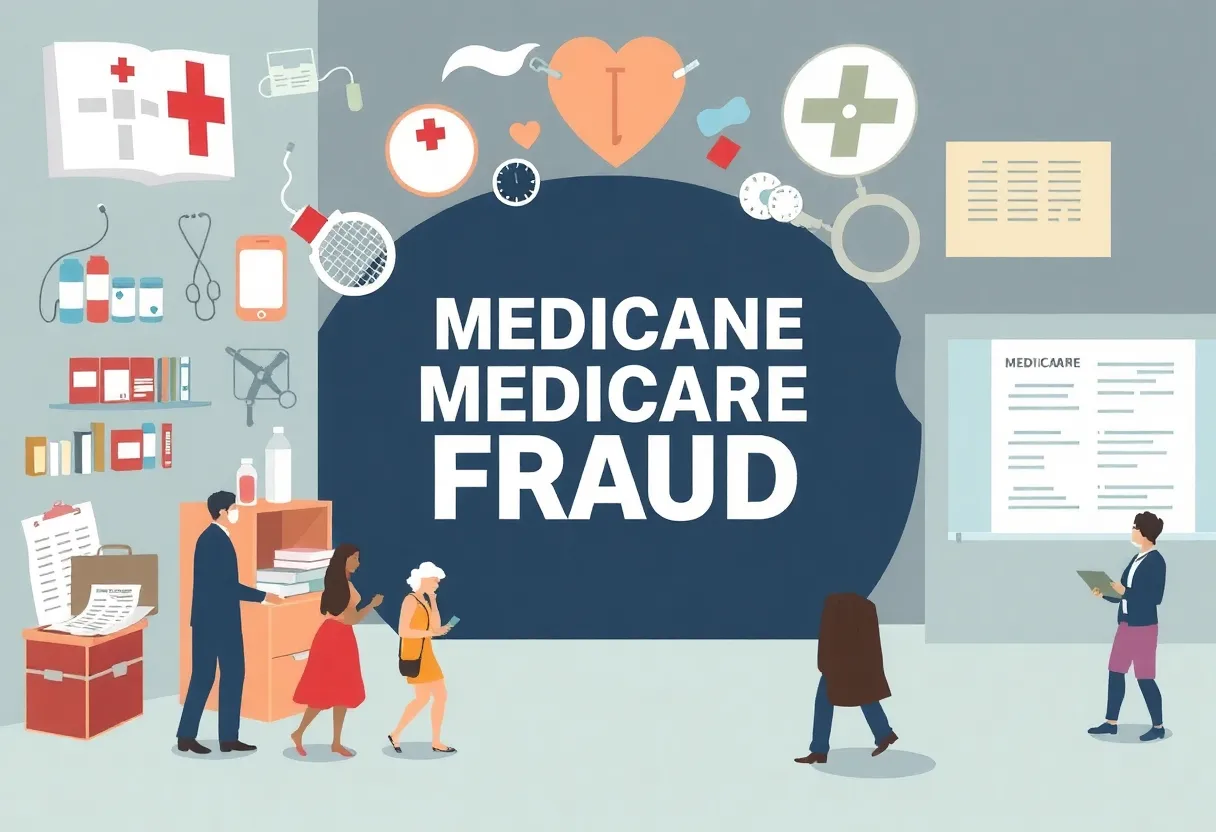News Summary
Federal officials have disrupted a large-scale Medicare fraud scheme, preventing over $10 billion in fraudulent claims. The operation exposed significant health care fraud affecting over 1 million Americans, with the culprits pocketing about $1 billion from other insurers. Named ‘Operation Gold Rush,’ the investigation resulted in charges against 19 individuals involved in conspiracy and fraud, highlighting the extensive impact of organized crime within the health care system.
Major Medicare Fraud Scheme Uncovered: Authorities Take Action
In a startling announcement, federal officials revealed that they have successfully disrupted a massive Medicare fraud scheme, preventing over $10 billion in fraudulent claims. Yet, surprisingly, the culprits managed to pocket around $1 billion from other insurance providers. This extensive operation, aptly named Operation Gold Rush, has brought to light a troubling trend of health care fraud plaguing the United States.
The Scheme and Its Victims
Among the victims is Gerald Quindry, a 73-year-old retired engineer who received an alarming statement indicating that Medicare was billed $15,500 for urinary catheters he never ordered or received. Gerald isn’t alone; over 1 million Americans found their personal information compromised as part of this elaborate scheme.
The fraud involved the purchase of more than 30 small health care supply companies that were already enrolled with Medicare. These companies allegedly submitted an astonishing number of medical claims — over 1 billion urinary catheters and other unnecessary supplies like continuous glucose monitors. Federal investigators voiced the absurdity of such high claim numbers, questioning the feasibility of producing that many products in such a short time.
A Shift in Tactics
This crackdown on health care fraud marked a significant shift in the way authorities respond to such scams. Federal officials transitioned from a previous model of “pay and chase” to a more proactive approach, aptly named “stop and caught.” Through this strategy, they managed to prevent over 99% of Medicare payments from reaching the suspects and even seized tens of millions of dollars in fraudulent proceeds, throwing a wrench in the plans of these criminals.
The Human Toll and Wider Impact
Despite these protective measures, the alleged perpetrators still managed to collect $1 billion from Medicare supplemental insurers, which are required to reimburse claims processed by Medicare. In the course of the investigation, federal authorities charged 19 individuals with conspiracy, health care fraud, and money laundering. Some of these individuals have connections to countries like Estonia, Kazakhstan, and Russia.
The operation also snagged several suspects trying to flee at U.S. airports and the U.S.-Mexico border. Some individuals took plea deals, while four others were apprehended in Estonia, thanks to a cooperative effort with local authorities. As if that’s not enough, more than 400,000 complaints related to this catheter scheme were logged by Medicare and its contractors, all stemming from distressed patients who were just trying to access legitimate healthcare.
The Bigger Picture: Organized Crime
The implications of this scheme are staggering. The fraud implicated nearly 7,000 physicians, whose names were misused to make unauthorized orders for supplies. Many legitimate companies — such as “Pretty In Pink Boutique” in Tennessee — found themselves overwhelmed by patient complaints, showcasing just how far-reaching the effects of this fraud have been.
During this crackdown, authorities disrupted additional fraudulent activities valued at approximately $4 billion, spanning telemedicine and genetic testing, revealing a widespread issue within the health care system. In response, the U.S. is adopting artificial intelligence and digital tools to combat these fraudulent acts more effectively.
The Cost of Fraud
The fraudsters collectively submitted an eye-watering $10.6 billion in claims, further illustrating the overwhelming scope of this operation. The Department of Justice has arrested or charged over 320 individuals linked to a variety of healthcare fraud cases, making this the largest coordinated law enforcement takedown of its kind.
Throughout the crackdown, law enforcement seized over $245 million in cash, luxury vehicles, cryptocurrency, and various assets, painting a vivid picture of the financial devastation caused by these schemes. Federal officials highlighted that every fraudulent claim represents theft, directly robbing American taxpayers who fund essential healthcare programs.
Conclusion
The landscape of healthcare fraud is complex and ever-evolving. As authorities work tirelessly to bring offenders to justice, the need for robust protections and proactive measures has never been more evident. Only time will tell how this newfound focus on prevention and awareness will shape the future of Medicare and the U.S. healthcare system.
Deeper Dive: News & Info About This Topic
- The Washington Post
- Wikipedia: Medicare
- WSB Radio
- Google Search: health care fraud
- Fierce Healthcare
- Encyclopedia Britannica: Health Care
- ABC News
- Google News: Operation Gold Rush
- CBS News
- Axios
- The Hill

Author: STAFF HERE AUGUSTA WRITER
The AUGUSTA STAFF WRITER represents the experienced team at HEREAugusta.com, your go-to source for actionable local news and information in Augusta, Richmond County, and beyond. Specializing in "news you can use," we cover essential topics like product reviews for personal and business needs, local business directories, politics, real estate trends, neighborhood insights, and state news affecting the area—with deep expertise drawn from years of dedicated reporting and strong community input, including local press releases and business updates. We deliver top reporting on high-value events such as Arts in the Heart Festival, Westobou Festival, and Masters Week. Our coverage extends to key organizations like the Augusta Metro Chamber of Commerce and Greater Augusta Arts Council, plus leading businesses in manufacturing and healthcare that power the local economy such as Textron Specialized Vehicles, Cardinal Health, and Nutrien. As part of the broader HERE network, including HEREAtlanta.com and HERESavannah.com, we provide comprehensive, credible insights into Georgia's dynamic landscape.


